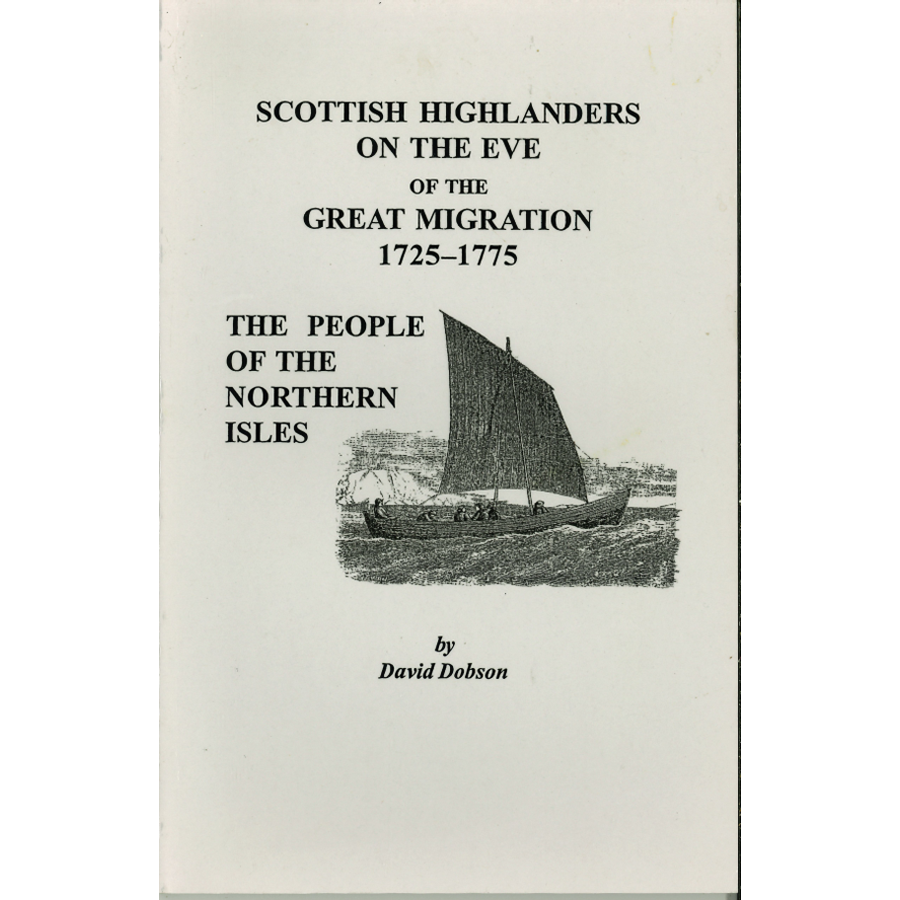Scottish Highlanders on the Eve of the Great Migration, 1725-1775: The People of the Northern Isles
Couldn't load pickup availability
People seeking their Highland roots face the problem that there are few, if any, church records available that pre-date the American Revolution. In the absence of Church of Scotland records, the researcher must turn to a miscellany of other records, such as court records, estate papers, sasines, gravestone inscriptions, burgess rolls, port books, services of heirs, wills and testaments, and especially rent rolls. (Some rent rolls even pre-date parish registers.) This series, therefore, is designed to identify the kinds of records that are available in the absence of parish registers and to supplement the church registers when they are available.
The Northern Isles were once isolated on the northwest fringes of Europe; however, as trans-Atlantic trade expanded, they found themselves astride a major sea route between North America and northern Europe. Stromness in the Orkneys became the first or last port of call for many vessels crossing the Atlantic; for example, the vessels of the Hudson Bay Company from the late 17th-century traveled from Stromness to North America. For most Orkney emigrants, the motivating factors were poverty and lack of opportunity. Also noteworthy is that, unlike the other Highlanders, the Northern Islanders were of Scandinavian, not Celtic, origin (with an element of Lowland Scots).
While the present volume is not a comprehensive directory of all the Orkney and Shetland Islander emigrants during the mid-18th-century, it does pull together references on more than 1,000 18th-century inhabitants. In all cases, Mr. Dobson gives each Highlander's name, a locality within the Northern Isles (place of birth, residence, employment, etc.), a date, and the source. In some cases, readers also learn the identities of relatives, the individual's employment, vessel traveled on, and so forth.
David Dobson
2008, paper, 112 pp.
ISBN: 9780806353791
102-9013
